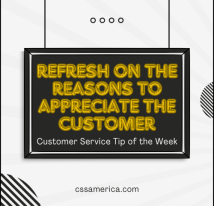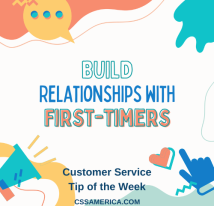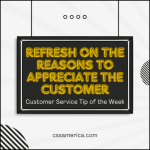
I don’t know if she realized it, but Elaine was great! The Optometrist Assistant went to the waiting room to call on Rodney, and she smiled as she said his full name. She introduced herself and asked him to follow her to the exam room.
As they entered she said – You get the BIG chair!
She asked about Rodney’s weekend and shared a little about hers as well when he asked. She told Rodney what she was about to do and why – whether it was checking vision or putting drops in his eyes.
They discussed the doctor he had met with months earlier when he was having an issue with floaters, and she raved about the doctor – “a special person…84 years old – been here his entire career…very thorough.”
When she was done with the diagnostics and drops, she conveyed a sense of urgency (but not anxiety) on Rodney’s behalf by pleasantly saying “let me get Dr. Smith in here for you.”
These are snippets from the conversation between Elaine and Rodney, but they illustrate so much that’s great in customer service:
- Share your name and use their name – This personalizes the conversation
- Be inquisitive – This conveys your interest and shows you care
- Build up co-workers in front of customers – This adds credibility to the co-worker and the organization
- Describe next steps – This reduces worry by making the unknown known
- Explain “the Why behind the What” – This enables the customer (or patient!) to feel more comfortable with what’s being done; it helps with their buy-in and support.
Sometimes little things mean a lot. Learn from this little interaction about how a great customer experience can look.
Develop an eye for great customer service.
Signup for FREE Tips! Contact Us More Resources for You Visit Our Home Page























